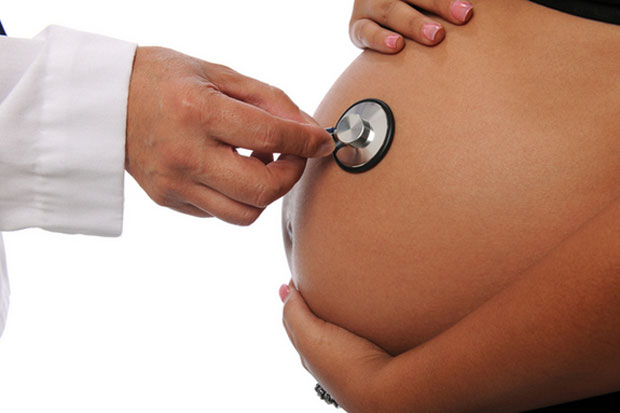Length of a Healthy Pregnancy Surprisingly Variable

How long a healthy pregnancy lasts can vary by as much as five weeks, even when doctors precisely determined the date of conception, a new study suggests.
Although the length of a healthy pregnancy is known to be variable, some of this variation was thought to be due to errors in determining the age of the baby, the researchers said.
The new study was able to pinpoint the exact day of conception by analyzing urine samples from 125 women who were trying to become pregnant in the early 1980s. Changes in hormone levels in the urine were used to determine the day of ovulation — presumed to be the same day as conception — as well as the day the embryo implanted in the uterus.
On average, pregnancies lasted 38 weeks from the day of conception to the day the baby was born, or about 40 to 41 weeks from the day of the women's last menstrual period. (The latter measure is more commonly used to determine a woman's due date.)
But even after excluding babies who were born preterm, the length of pregnancy ranged from about 35 to 40 weeks from the day of conception to the day of birth (or about 38 to 43 weeks from the day of a woman's last menstrual period.) [See Are Firstborns More Likely to Be Late?]
The researchers were surprised to see such variation even with a precise determination of the day of conception, said study researcher Dr. Anne Marie Jukic, a postdoctoral fellow in the Epidemiology Branch at the National Institute of Environmental Health Sciences in Durham, N.C.
The findings suggest that the practice of giving a woman a precise due date may not be the best way to communicate pregnancy duration. Only about 4 percent of women actually deliver on their due date, which is typically estimated to be 280 days after the woman's last menstrual period.
Sign up for the Live Science daily newsletter now
Get the world’s most fascinating discoveries delivered straight to your inbox.
"The emphasis on a single due date may make the length of pregnancy seem more predictable than it really is," Jukic said. Providing women with a range of due dates may be a better way to communicate the length of pregnancy, Jukic said.
The length of participants' previous pregnancies was also strongly linked to the length of their current pregnancy, suggesting that this measure might also be helpful in determining a woman's "natural" pregnancy length, the researchers said.
The study also found that characteristics of early pregnancy may provide some clues about due date: Embryos that took longer to implant also took longer to deliver, and pregnancies for embryos that showed a late rise in a hormone called progesterone were about 12 days shorter than those with an early rise.
However, some experts were critical of the study. Dr. Tomer Singer, a reproductive endocrinologist and infertility specialist at Lenox Hill Hospital in New York, said the study did not provide much information that wasn't already known. When speaking with pregnant women, doctors already emphasize that few women give birth on their due date, Singer said. Singer said he tells patients that they're likely to give birth sometime between 37 and 42 weeks from the date of their last menstrual period (a five-week range).
In addition, the study was small, and included mostly young, white women who did not have fertility problems, so the results may not apply to the general population, Singer said. The study was also conducted 30 years ago, when fewer obstetric interventions to prolong pregnancy were preformed, Singer said.
The study is published today (Aug. 6) in the journal Human Reproduction.
Follow Rachael Rettner @RachaelRettner. Follow LiveScience @livescience, Facebook & Google+. Original article on LiveScience.com.

Rachael is a Live Science contributor, and was a former channel editor and senior writer for Live Science between 2010 and 2022. She has a master's degree in journalism from New York University's Science, Health and Environmental Reporting Program. She also holds a B.S. in molecular biology and an M.S. in biology from the University of California, San Diego. Her work has appeared in Scienceline, The Washington Post and Scientific American.
Man gets sperm-making stem cell transplant in first-of-its-kind procedure
'Love hormone' oxytocin can pause pregnancy, animal study finds










